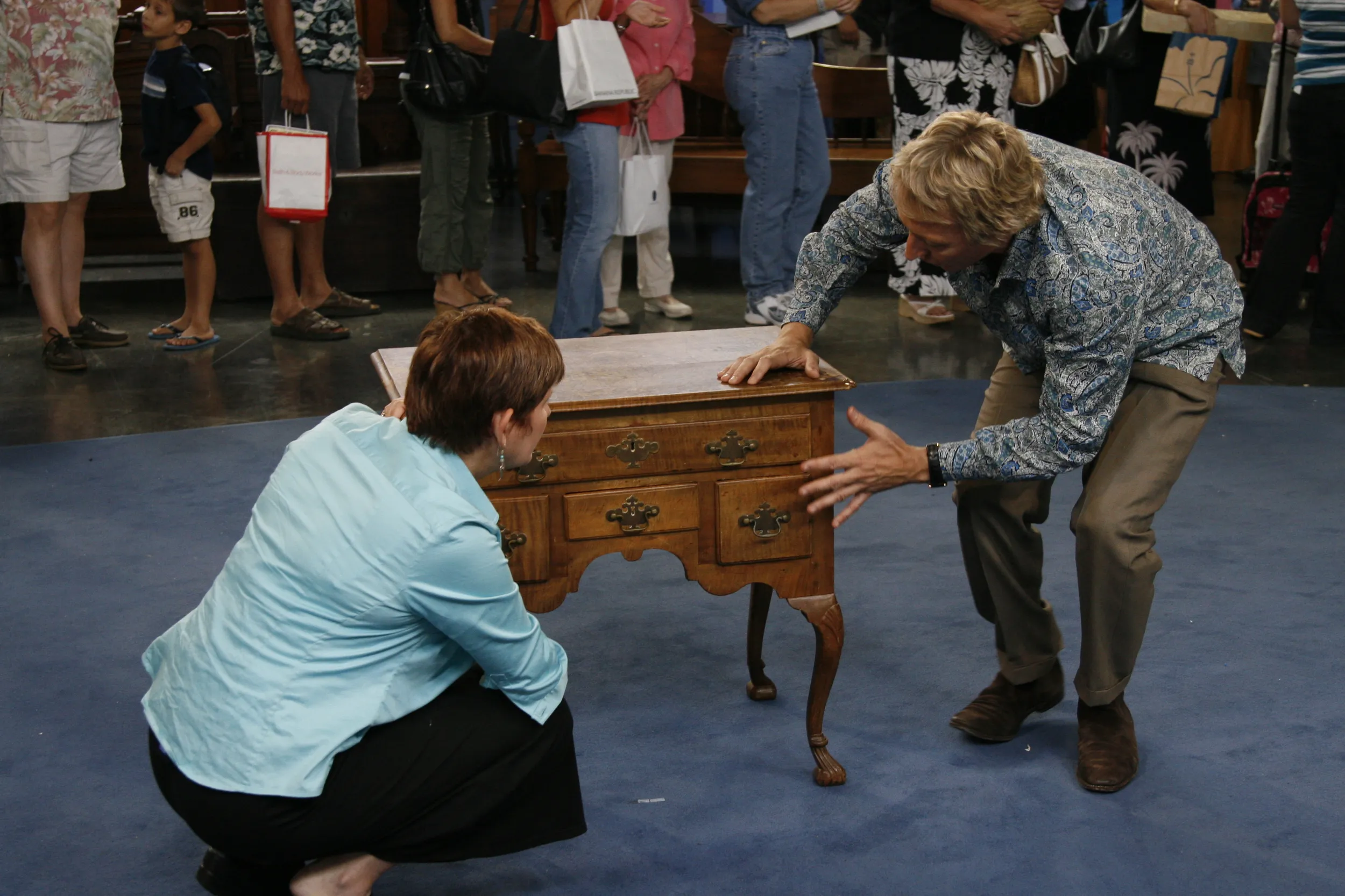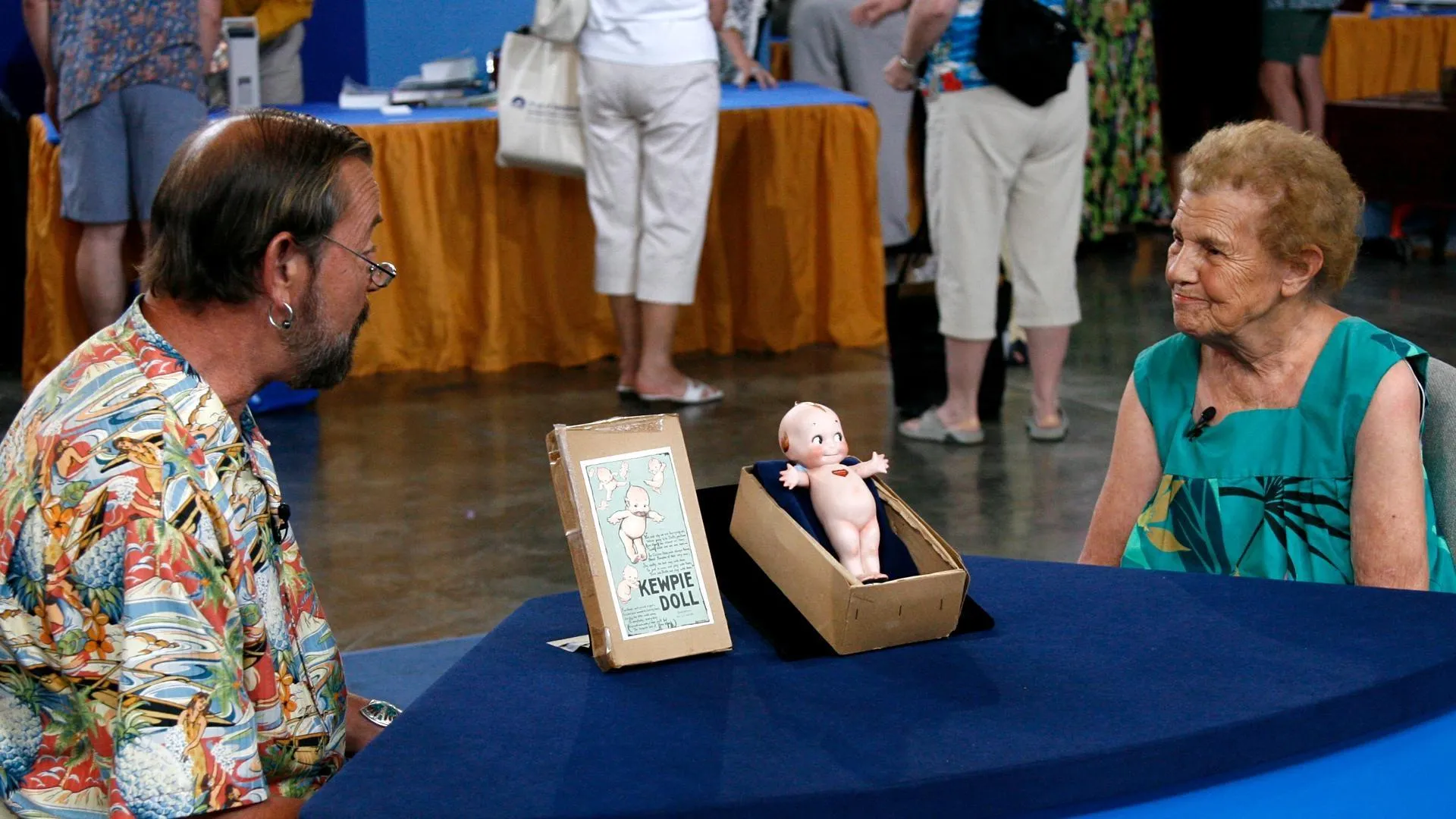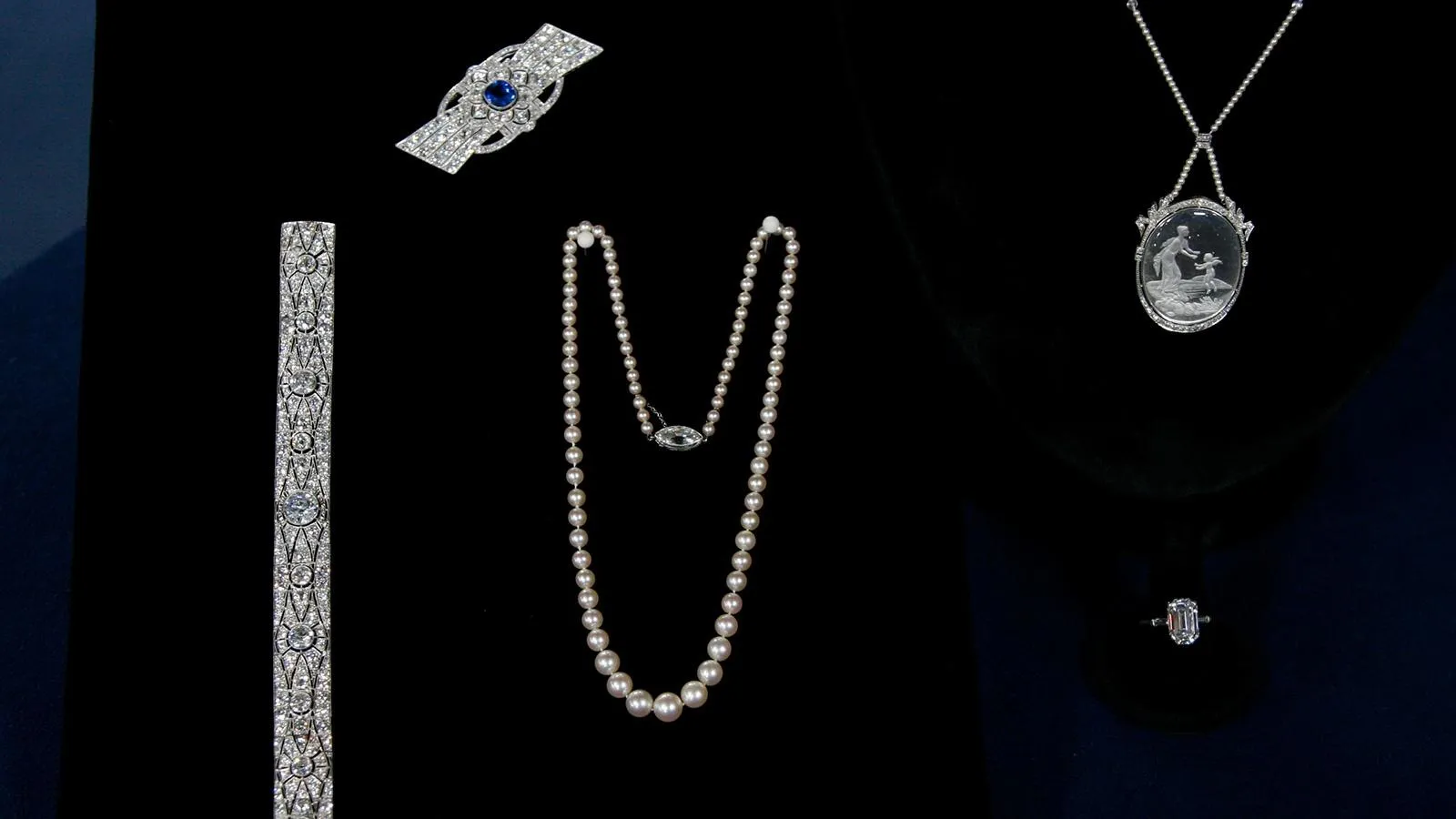APPRAISER: I didn't expect to have to come to Honolulu to find a piece from the East Coast. Do you know where this piece is from?
GUEST: Greenwich, Connecticut. That's where my grandfather lived.
APPRAISER: Okay.
GUEST: And so that's where we... he brought it from.
APPRAISER: So he brought it from Greenwich. And how did it come to you?
GUEST: My grandfather was living in Kipahulu on Maui. He and my grandmother were there and they needed some help. So my husband and I moved over there. My grandmother died, and so I was taking care of him, and by this time, he had shipped some of his pieces from Greenwich out to his house because he lived there full-time.
APPRAISER: Okay.
GUEST: I ended up with this piece.
APPRAISER: I love this because I live and breathe wonderful wood, and 18th-century furniture, okay? That's what... that's what makes me tick.
GUEST: Okay.
APPRAISER: I don't know if you know, but it does, okay?
GUEST (laughing): Okay.
APPRAISER: This was made right in Philadelphia about 1745 to 1750.
GUEST: Wow.
APPRAISER: It's called a dressing table. In the trade, we call it a low boy. These dressing tables, or low boys, were made with a high chest, a tall piece.
GUEST: Uh-huh.
APPRAISER: They basically were sold together.
GUEST: Right.
APPRAISER: And then they often get separated. So somewhere out there, there's a mate to this. This molded top is above this long drawer. It has a molded edge. And then below here, you have three drawers. And you have this wonderful cyma curve and this very baroque arch here with a little drop.
GUEST: Uh-huh.
APPRAISER: And it's all supported by these cabriole legs. And you come down to that foot, and some people call it a Spanish foot. This type of foot was typical of the best made in Philadelphia. The top is this wonderful tiger maple. And tiger maple is something that wasn't just grown. You know, you had to cut the tree. You had to go through a lot of maple to find a piece of wood that had this kind of fiddleback. I know this is loose because I lifted it up before, right?
GUEST: Right.
APPRAISER: So I'm going to carefully lift this. If I just take this board-- it's a two-board top, right?
GUEST: Uh-huh.
APPRAISER: And just put it like this, you'll see that the tigering, the curly figure on the inside of the case, matches that on the top. It's clearly from the same wood source. Also, the oxidation, the discoloration from being exposed to the little bit of air that was getting in there?
GUEST: Uh-huh.
APPRAISER: Matches. So we know that those two pieces of wood-- the side of this case and this top-- have been next to each other, we feel, for about 250 years. I mean, that's a good thing, right?
GUEST: Right. (laughs)
APPRAISER: Okay, but watch this. We've got to make sure that all the holes on the top match the holes on the case.
GUEST: On there, uh-huh.
APPRAISER: Right? The attachment holes? We do that and see that there's a big old hole right there. There's no hole there.
GUEST: Right.
APPRAISER: But I was here with my colleagues, and one said, "Leigh, slide the top over." When you slide the top over about an inch and a half, look.
GUEST: Uh-huh.
APPRAISER: That whole matches that hole.
GUEST: Right.
APPRAISER: And this hole matches. And if I take my finger from these two holes, and go like this, here's the hole here, and there's a shank of a nail right there in the top of that leg. This is the original top. They shaved it down. It must've gotten damaged on the edge or something. With the top original but reshaped, the value of this-- on the East Coast, let's say, it's probably worth a little more on the East Coast-- would be about $12,000 retail, okay? That's what it's worth.
GUEST: Oh, wow.
APPRAISER: Now, let me tell you what it would be worth if it hadn't been cut. The original. Because condition's so important of American furniture.
GUEST: Right.
APPRAISER: Uncut it would be worth about ten times that, about $120,000.
GUEST: (chuckles) Oh, boy.
APPRAISER: I mean, this happened 150 years ago.
GUEST: Yes, they cut it.
APPRAISER: So it's nothing you did.
GUEST: It's nothing I did.
APPRAISER: If you told me, "Leigh, I did that last week," I think you'd be a little more bummed out, right?
GUEST: Right, right, right.













